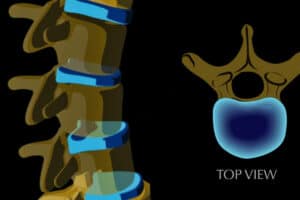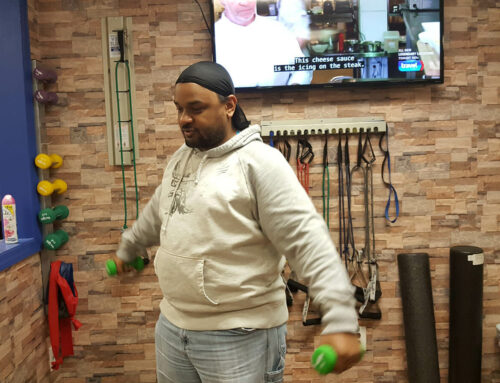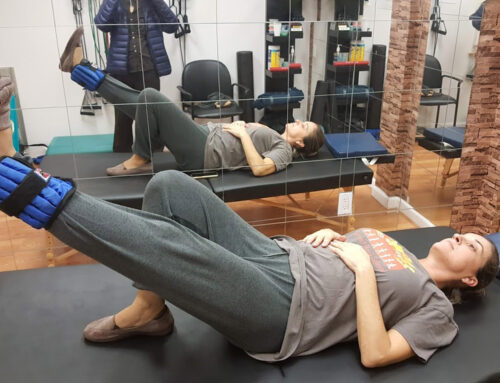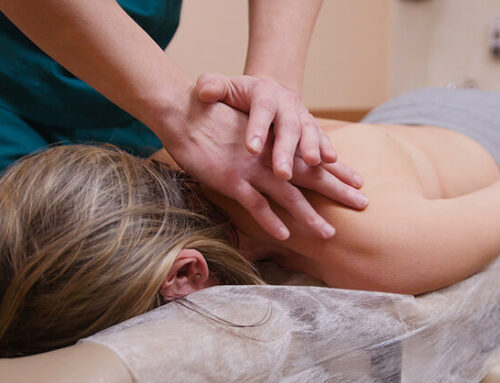
It’s not the herniated disc that might cause the issue. It’s when that protruding nucleus irritates a nerve that’s nearby. This is what can produce symptoms that run the gamut from pain in the arm and legs to numbness and tingling to weakness.
People have also had herniated discs and not shown any symptoms. A spinal scan will reveal it.
If the diagnosis is a herniated disc, there are several ways to treat. Physical therapy is one way. There are multiple methods available to the physical therapist:
Passive Treatment
This is where the patient has things done to them by the physical therapist. There is no active movement on their part through the course of the treatment.
- Hot and Cold Therapy – The heat will make the circulation around the area, which can then possibly help it heal. Cold treatments can help spasms. They may be alternated or the physical therapist may determine that one or the other is working better.
- Hydrotherapy – The patient may sit in a whirlpool and let the water jets massage the area or they may take a warm shower. The warmth will relax the muscles.
- Deep-tissue massage – This can really help with the issue of muscle spasms, since the physical therapist digs in and it helps with any muscle tension around that area.
- Transcutaneous Electrical Nerve Stimulation (TENS) – The physical therapist will put electrodes on certain parts of the body, which are keyed to certain nerve points. An electric current is sent through and it activates pain-killing endorphins.
- Traction – This is not to be mistaken for being put in traction in a full-body cast after an accident. The physical therapist puts the patient on a machine that looks almost like a squat machine that has been laid on its back. This can help pull apart bones and take pressure off the affected area.
Active Treatments
The patient and physical therapist will work together with these, with the patient doing the exercises with the goal of being able to continue an exercise program down the road.
- Core Stability – Having a strong core can significantly reduce the stress on one’s back. The physical therapist will show the patient exercises that can improve their abdominal muscles, since that is what stabilizes a lot of the body:
- Hydrotherapy – No, this is not an accidental repost from the passive treatment section. The physical therapist will have the patients do things like run or walk in water, which can give a lot of resistance but is low-impact on many body parts.
- Flexibility Exercises – Having tight muscles in one part of the body can affect other parts. Having tight hamstrings can cause back pain since the hamstrings can pull on back muscles. Having flexibility
- Muscle Strengthening – Having strong muscles can help stabilize the spine. Besides the aforementioned core, lower back muscles can play a big part. It’s just a matter of matching strength with flexibility to ensure a healthy body.
Prevention
There are exercise programs that people can do include cycling, swimming, walking, and yoga. These are low-impact exercises that can help a patient – they need to do it slowly and with good form. The above are things that can be done at one’s own pace.
When it comes to various affected parts, patients can do simple stretches for the neck, hamstrings, and the lower back. It’s only takes a few minutes to do them and by doing them, it’s an insurance policy to possibly keep the bulging disc from causing more issues.
Other things that people can do to help prevent herniated discs is to
- have good posture,
- maintain a healthy weight
- Quit smoking
Doing the above is not a guarantee that one won’t get a herniated disc, since the chances of this occurring increases with age. It can help tip the odds in their favor though and could make any potential rehabilitation for one much smoother in the future.
While physical therapy, exercise and judicious use of painkillers can help bring the patient back to a state of normalcy, there are times when even this is not enough. Surgery becomes the last resort… and then a period of rest and rehabilitation lies ahead.
The staff at Phoenix Physical Therapy Rehabilitation have worked with many cases of herniated or bulging discs. They will be glad to discuss the best method during the first appointment. Patients can see them at one of three locations: Brooklyn, Rosedale and Levittown. Give them a call at 347-733-1916 – it’s a 24/7 hotline.
Published By:
Phoenix Physical Therapy Rehabilitation, LLC
Rosedale
23520 147th Avenue, Suite 1
Rosedale, NY, 11422
Brooklyn
7510 4th Ave., Suite 3
Brooklyn, NY, 11209
Phone: (347) 733-1916
Website: https://phoenixphysicaltherapyrehab.com/







